Alan Lester
Background: On 9th January 2022, Robert Tombs, Emeritus Professor of French History at the University of Cambridge and myself debated the legacies of the British empire, all too briefly, on the GB TV News Channel’s The Debate programme. I followed up by contacting Prof Tombs, asking if he would like to engage in further debate. He invited me to submit an essay, to which he would respond, on his History Reclaimed website. I agreed and suggested that the exchange be about the relationship between the British Empire and Race, to which he assented. Below is that exchange with my initial essay, Prof Tombs’ response and my final rejoinder, which Prof Tombs kindly agreed to have as the ‘last word’ since he had had that privilege in the TV debate. At present I am awaiting publication of that rejoinder, only just sent to Prof Tombs, on the History Reclaimed website, but here is the exchange in full in the meantime:

The British Empire and Race
By Alan Lester
Historians’ approach to the past is inevitably inflected by the politics of our own time. However, the ‘culture’ war has been marked by purely politically motivated commentary on the British Empire. The Empire cannot be reduced to racism but nor should the extent of its racism be denied as part of a backlash against Black Lives Matter. The following broad conclusions are based on extensive archival research and consensus among specialists.[1]
Racial Violence
Empires have been the norm in history. Britain’s was possible only with indigenous collaboration. Resistance to it was fractured by ‘tribal’, religious, and other distinctions. Its violence was not directed only against people of colour.
Yet the British Empire’s maintenance of White people’s rule over people of colour on six continents was unique. Only the other modern European and American empires came close in scale and racial differentiation. Antecedent empires were generally founded on contiguous land annexation and with shallower gradations of phenotypical difference.
White colonists’ building of Caribbean and American plantation colonies with enslaved African people’s labour from the 17th to the early 19th centuries, was a key foundation of the Empire’s enduring association between ‘race’ and status. By 1807 Britons had transported 3 million enslaved Africans across the Atlantic. Within the next half century, they and their descendants had decimated Native Americans and Aboriginal Australians; subjected the Xhosa to eight wars of colonial expansion; exploited the Mughal collapse to conquer much of India; and fought three wars against Māori.[2]
When Germany and Belgium developed empires in the Scramble for Africa later in the 19th century, some indigenous leaders appealed for British ‘Protection’ to retain self-determination.[3] Elsewhere Britons continued to extend their interests aggressively. Just three years, 1838, 1857 and 1879, saw the first and second invasions of Afghanistan, the first and second Opium Wars, the suppression of the Indian Uprising and wars of conquest against Xhosa, Griqua, Pedi and Zulu.[4] In 1896, Colonel Callwell wrote a guide for British soldiers engaged in the empire’s ‘small wars’, against ‘savages … provided with poor weapons.’ There were over sixty such wars during the second half of the nineteenth century.[5]
It is impossible to calculate how many people of colour were killed in Britain’s imperial conquests since they were never systematically counted, but from the estimates we have of recorded conflicts, it is safe to say they number in the millions.
Discriminatory Rule and Consent
Despite a tradition of anti-colonial thought in Britain, people of colour were generally subordinated in status to White colonists. In most colonies even the poorest White women had access to Black people’s domestic labour, and corporal punishment of servants was common.[6] Across the Empire, racial discrimination, often finely graded according to ethnicity or skin shade, conditioned everyday life, including access to jobs, the law, health care, education, democracy, and the railways.[7]
British rule in India was distinct, with Indian elites acting as subordinate partners. The East India Company controlled the nobility and brought security to merchants. After the 1857 Uprising, a British-educated Indian middle class grew to administer the civil service. These groups prospered amidst increasing inequality.[8]
There is insufficient data to track the well-being of the mass of the Indian population under British rule, but the government spent little on agriculture, healthcare, or education while some Indian taxation revenue was transferred to Britain as East India Company shareholder dividends, railway investor subsidies, and ‘home charges’.[9] A conservative estimate is that 20 million Indians died in the major famines under British rule. Aside from the devastating Bengal Famine in 1943, major famines became rarer and government responses better in the 20th century, with none after independence.[10]
Across the Empire, rebellions were a regular occurrence.[11] In 1860 the Colonial Office advised on the distribution of imperial military resources. Perceiving the main threat at this time not so much from external powers as from subjects ruled without their consent, they used a formula based on each colony’s ratio of White colonists to ‘natives’.[12]
Abolishing Slavery and Expanding the Empire
Britain’s role in anti-slavery is erroneously conflated with anti-racism. When Britain followed Denmark in abolishing its slave trade in 1807 it also sent patrols to seize other nations’ slave ships: the result both of antislavery campaigners’ commitment and of an attempt to deny rival nations the benefits of the trade. The Royal Navy rescued 60,000 African captives, most of whom were either pressed into the British military or assigned to colonists as unpaid ‘apprentices’ for 10-20 years.[13]
Upon the British abolition of slavery in 1834, fifty years after northern US states had outlawed it and forty years after Saint-Domingue rebels had overthrown it, British slave owners were compensated for the loss of their ‘property’. Many reinvested in settler colonies, and in British infrastructure and institutions.[14] Labour shortages on plantations were met through the indenture and transport of 1.5 million British Indian subjects.[15]
Most African colonies were conquered after slavery was abolished, some with the justification of supressing indigenous slavery. Despite continuing British action against slavery around the world, the wars of confederation in southern Africa from 1878 to 1902 were influenced by Charles Dilke’s popular vision of a Greater Britain reflecting ‘the grandeur of our race.’[16] Dilke saw the ‘defeat of the cheaper by the dearer peoples’ as essential for the spread of civilization and applauded the fact that ‘the Anglo-Saxon is the only extirpating race on earth’.[17]
Scientific racism developed after abolition and Britain led the way in eugenics even if it did not apply these principles as extensively as in the USA and Germany.[18] The most popular notion in Britain was that that Black people lagged as children do to adults. Colonialism would eventually render them responsible enough for a share in their own governance. Missionaries and antislavery campaigners supported the Empire on these grounds.[19] However, the records of British colonists themselves are characterised by an everyday, condescending sense of racial superiority.[20]
When indigenous subjects assimilated to British culture and claimed the civilisational rights promised they were still treated as inferior. Lord Salisbury, Secretary of State for India, admitted that ‘If England was to remain supreme … she must tolerate the political role of Indian princes and of participation by Indians in the administration’, but that ‘if the number of well-educated Indians … should increase, the government would face the … necessity of closing that avenue to them’.[21] British-educated Indians and their counterparts in Africa turned to anticolonial nationalism to demand equality and policies of colonial development came too late to appease them.[22] Meanwhile, Canadian and Australian colonial governments removed indigenous and so-called ‘half-caste’ children from their families and placed them in White-run institutions, often characterised by abuse, to prevent future generations of distinct indigenous people.[23]
Transitioning from Empire
After WWII the British Empire was in retreat, but its geography has left an indelible imprint. Generations of Britons have been conditioned to think of Britain as a White country even if most of its subjects were people of colour located overseas. The fact that Britain was an empire rather than an island nation was widely disavowed until the empire ‘came home’.
From 1948, many more Black and Asian citizens exercising their right to live in the UK were met with verbal and physical abuse and discrimination, which confined them to poorer housing, schooling, and occupation.[24] Most Britons agreed with Enoch Powell that inter-communal conflict would result from further immigration.[25] Labour and Conservative governments have responded with increasingly restrictive and racially discriminatory immigration legislation, enabling the Windrush scandal.[26]
Antiracist campaigning has rendered it illegal to racially abuse and discriminate and a larger proportion of the White population now oppose racism. In the absence of any decisive rupture or reckoning with nostalgic views of Empire, however, many still hold the view that ‘those natives were never meant to come here and live next door’.[27] Official figures reveal disparities in income, criminal justice, housing, and employment that cannot be explained in the absence of institutional racism, and similar numbers of people believe racism exists in the country today (84%) as believe it existed 30 years ago (86%).[28] The British Empire secured prosperity for many people, but we should acknowledge that its legacy of racism is not a fiction of the Black Lives Matter movement.
[1] Thanks to Saul Dubow, Smuts Professor of Commonwealth History, University of Cambridge, Catherine Hall, Professor Emerita of Modern British History at University College London, and Michael Taylor, historian and author, for very helpful comments on a first draft of this essay. Any lapses are my own.
[2] See for example, Trevor Burnard, Jamaica in the Age of Revolution, University of Pennsylvania Press, 2020; Kate Fullagar, Michael A. McDonnell and Daniel K. Richter (eds), Facing Empire: Indigenous Experiences in a Revolutionary Age, Johns Hopkins University Press, 2018; Lester, Imperial Networks; Jon Wilson, India Conquered: Britain’s Raj and the Chaos of Empire, Simon and Schuster, 2017; Ann Curthoys and Jessie Mitchell, Taking Liberty: Indigenous Rights and Settler Self-Government in Colonial Australia, 1830-1890, Cambridge University Press, 2018; James Belich, Making Peoples: A History of the New Zealanders, Penguin, 2007.
[3] Thomas Packenham, The Scramble for Africa, Abacus, 1992; Jane Samson, Imperial Benevolence: Making British Authority in the Pacific Islands, University of Hawaii Press, 1998.
[4] Alan Lester, Kate Boehme and Peter Mitchell, Ruling the World: Freedom, Civilisation and Liberalism in the Nineteenth Century British Empire, Cambridge University Press, 2021.
[5] Stephen M. Miller (ed) Queen Victoria’s Wars: British Military Campaigns, 1857-1902, Cambridge University Press, 2021.
[6] Cecily Jones, Engendering Whiteness: White Women and Colonialism in Barbados and North Carolina, 1627-1865, Manchester University Press, 2007; Fae Dussart, In the Service of Empire: Domestic Service and Mastery in Metropole and Colony, Bloomsbury, 2022.
[7] See for example Curthoys and Mitchell, Taking Liberty; Elizabeth Kolsky, Colonial Justice in British India: White Violence and the Rule of Law, Cambridge University Press, 2011; Saul Dubow, Racial Segregation and the Origins of Apartheid in South Africa, 1919–36, Oxford University Press, 1989; Thomas Holt, The Problem of Freedom: Race, Labor, and Politics in Jamaica and Britain, 1832-1938, Johns Hopkins University Press, 1991; Jon Wilson, India Conquered.
[8] Tirthankar Roy, The Economic History of India, 1857-2010, 4th Edition, Oxford University Press, 2020, and An Economic History of India 1707-1857, 2nd Edition, Routledge, 2022.
[9] Roy, The Economic History of India, 1857-2010, 67, 94, 335.
[10] Tirthankar Roy, Were Indian Famines ‘Natural’ Or ‘Manmade’? LSE Economic History Working Papers No: 243/2016
[11][11] Richard Brown, Resistance and Rebellion in the British Empire 1600-1980, Clio Publishing, 2013
[12] Lester et al, Ruling the World.
[13] Richard Anderson and Henry B. Lovejoy, Liberated Africans and the Abolition of the Slave Trade, 1807-1896, Rochester University Press, 2020.
[14] Catherine Hall, Keith McClelland, Nicholas Draper, Katie Donington, and Rachel Lang, Legacies of British Slave-ownership: Colonial Slavery and the Formation of Victorian Britain, Cambridge University Press, 2014; Alan Lester and Nikita Vanderbyl, Feature: Legacies Of Slave
Ownership: ‘The Restructuring of the British Empire and the Colonization of Australia, 1832–8’, History Workshop Journal, Volume 90, Autumn 2020, 165–252.
[15] David Northrup, Indentured Labor in the Age of Imperialism, 1834-1922, Cambridge University Press, 1995; Madhavi Kale, Fragments of Empire: Capital, Slavery, and Indian Indentured Labor in the British Caribbean, University of Pennsylvania Press, 1998; Adam McKeown, ‘Global Migration 1846-1940’, Journal of World History, 19,2, 2004, 158.
[16] C. W. Dilke, Greater Britain A Record of Travel in English-Speaking Countries During 1866-7, J. B. Lippincott and Macmillan, 1869, preface.
[17] R. Jenkins, Dilke: A Victorian Tragedy, Bloomsbury, 1996, 28; Duncan Bell, Dreamworlds of Race: Empire and the Utopian Destiny of Anglo-America, Princeton University Press, 2020.
[18] Philippa Levine, Eugenics: A Very Short introduction, 2nd Edition, Oxford University Press, 2017.
[19] Catherine Hall, Civilising Subjects: Metropole and Colony in the English Imagination 1830-1867, Verso, 2002.
[20] For one example among hundreds of studies, see Brett Shadle, The Souls of White Folk: White Settlers in Kenya, 1900s-1920s, Manchester University Press, 2015.
[21] P. Smith, ‘Cecil, Robert Arthur Talbot Gascoyne-, third marquess of Salisbury (1830–1903), prime minister, Oxford Dictionary of National Biography, 2011, retrieved 28 Oct. 2019, from https://www.oxforddnb.com/view/10.1093/ref:odnb/9780198614128.001.0001/odnb-9780198614128-e-32339
[22] Judith Brown, Modern India: The Origins of an Asian Democracy, 2nd Edition, Oxford University Press, 1991; Saul Dubow, The African National Congress, Sutton, 2000; Roy, The Economic History of India, 213; Joseph M. Hodge, Gerald Hödl and Maryina Kopf, Developing Africa: Concepts and Practices in Twentieth-Century Colonialism, Manchester University Press, 2014.
[23] Julie Evans, Patricia Grimshaw, David Philips, and Shurlee Swain, Equal subjects, Unequal Rights: Indigenous People in British settler colonies, 1830s–1910, Manchester University Press, 2018.
[24] Eleanor Passmore and Andrew Thompson, ‘Multiculturalism, Decolonisation and Immigration
Policy in Britain and France after the Second World War’, in Andrew Thompson and Kent Fedorowich (eds), Empire, Migration and Identity in the British World, Manchester University Press, 2015, 247-64.
[25] The figures in opinion polls ranged from 67 to 82 per cent. Bill Schwarz, The White Man’s World: Memories of Empire vol. 1, Oxford University Press, 2011, 48.
[26] Ian Sanjkay Patel, We’re Here Because You Were There: Immigration and the End of Empire, Verso 2021.
[27] Quote from Patel, We’re Here, vii. Observation from personal experience of conversations among White people.
[28] https://www.ethnicity-facts-figures.service.gov.uk/; Jonathan Portes, ‘Race Report: Sewell Commission Couldn’t Find Something It Wasn’t Looking For’, 9 April 2021: https://bylinetimes.com/2021/04/09/race-report-sewell-commission-couldnt-find-something-it-wasnt-looking-for/; https://yougov.co.uk/topics/politics/articles-reports/2020/06/26/nine-ten-bame-britons-think-racism-exists-same-lev
Reply: The British Empire in Context By Robert Tombs
I never expected that I would find myself writing in defence of the British Empire, which is not a scholarly interest of mine, and I do not pretend to any expertise. I will not try to contest Professor Lester in detail, however occasionally tempting. For example, the ‘decimation’ of aboriginal peoples in Australia was probably due to smallpox carried by South Asian fishermen[1]; Britain was never an empire, nor was there free movement within the empire; it is misleading to suggest that slavery was abolished in the northern USA before it was abolished throughout the British empire; although slave owners received compensation, it was not paid by the slaves – unlike the unfortunate Russian serfs a generation later; it is tendentious to imply that famines in India were caused by imperial government, when that government’s Famine Codes pioneered modern responses to famine[2]; and so on.
I am more interested in the overall approach taken by many academics and commentators today, of whom Professor Lester is a notable example. I agree with his balanced comment that “the ‘culture’ war has been marked by purely politically motivated commentary on the British Empire … Empires have been the norm in history. Britain’s was possible only with indigenous collaboration.” Most of his own article, in contrast, is written as an indictment, avowedly politically informed. Are sustained negativity and rigorous selectivity convincing? Is this the only credible interpretation?
The Empire conferred certain benefits, including protection from foreign attack, access to international trade, modern administration, technology, capital investment and order. It did so fairly cheaply: taxation was lower than in independent states. There were gainers and losers, and whether its subject people regarded it positively or negatively depends on who, when and where. The voices of freed slaves, women spared forced marriages, or people saved from ritual sacrifice are mainly lost, unlike those of the celebrated anti-colonial elite. Independence gave huge advantages to the latter, who took power in former colonies, but this was not a liberation for all their peoples, many of whom were worse governed after independence. The end of the empire over the 1940s, 50s and 60s was in many ways a liberation for Britain, whose economy, finances and security had been skewed by possession of an empire. I don’t think any of this is contentious. Why then should there now have appeared, at least in some quarters, an obsessive interest in the Empire?
I think Alan Lester’s piece helps us to understand. He is a serious scholar. Nevertheless, his focus – to the exclusion of almost everything else – is on race and violence. What was unique about the British Empire, he suggests, was the extent of “White people’s rule over people of colour”, whereas most other empires had “shallower gradations of phenotypical difference.” The unusual phraseology is a significant clue. He is approaching the history of the empire through the eyes of the 21st century, or more precisely, through certain 21st-century eyes – seemingly those of post-colonial nationalism and Critical Race Theory, whose political record and theoretical assertions are highly questionable.
In part this revives a very old historical debate. Is our aim to understand the past as ‘a foreign country’ (an insight that ‘humanity gradually learned’), or to summarily annex it to our own times and subordinate it to our own beliefs?[3] There is no easy answer. It would be repugnant to attempt to judge Nazism or Communism by their own standards. But it would be ludicrous to criticize the Ottoman Empire for, let us say, not being a democracy.
Can the British Empire be assessed dispassionately, in the way we might assess the Ottoman or Mughal empires? I remember being struck by one very distinguished global historian referring to massive violence by the Mughals as ‘extreme solutions’ to achieve ‘internal pacification’.[4] We would not use those terms of the British in Amritsar in 1919.
This is not simply a chronological question, by which one might say that dispassionate analysis is possible after a certain lapse of time. It is also dependent on whether there are people alive who claim some stake: people who are, or who consider themselves to be, in some way victims of empire, or indeed its beneficiaries. There is also ideology. Many people judge ‘colonialism’ more evil than the alternatives, and this inevitably colours their work. Even defensive wars are considered wars of aggression if they take place within an empire.
The recent desire among some academics – often very publicly manifested — to pass moral judgment on the British Empire is unusual. Historians of the Roman Empire, the Ottoman Empire, or the Mughal Empire rarely if ever pronounce moral verdicts or support campaigns to pull down statues of Mehmed II or Aurangzeb, or place apologetic notices on the Coliseum. That is not what modern historiography is about. Historians normally seek to analyse how things worked, and how people thought. Yet numerous academics tried to stop Professor Nigel Biggar’s research project on ‘Ideas of Empire’, and several other historians of empire are cancelled and even threatened if they undertake such analysis.
Professor Lester seems to condemn the British Empire and other European empires firstly because pale-skinned people ruled darker-skinned people – that gradation of phenotypes. He gives a list of violent episodes and inequalities because they seem to back up his overall standpoint. Do they?
Imagine trying to assess the British Empire — ‘a global mosaic of almost ungraspable complexity and staggering contrasts’[5] — in the way that other historical empires – ‘the norm in history’ in Lester’s words –are assessed. What would one need to do? To look at its economic policies and their outcomes; at its effectiveness in keeping the peace and in fostering health and education, its costs in terms of taxation or other forms of economic extraction, its cultural achievements, and the degree of support given by its peoples. And one would need some standard of comparison: with contemporary empires, such as the French, Russian or Dutch; with settler states such as the USA or Brazil; with states that were not colonized (for example China, Thailand, or Ethiopia); with non-state societies (such as New Guinea[6]); with previous rulers; and with successor governments in former colonies.
But comparison seems lacking. Indeed, some comparisons seem to be taboo, and those who make them risk being vilified and silenced. Many academics appear to espouse the nationalist myths of postcolonial states, which in some notable cases are their own countries. These myths highlight oppression and resistance, and privilege the voices of opponents of empire. These were often the nationalist elites of those societies, whose rule, when it came, was sometimes more oppressive, more corrupt, and indeed more violent and racist, than that of the former colonial authorities.
One could list episodes of pre-colonial and post-colonial violence as Professor Lester lists cases of colonial violence. I am not clear whether he and those who adopt similar positions think that violence committed by Zulus, Asante, Marathas, Arab slave traders and so on is morally neutral. If so, is this not adopting the position he ascribes to the colonialists – that indigenous peoples are like children? And are today’s oppressors not being let off the hook?
Comparison may be difficult, requiring a wide range of knowledge. Yet without at least a broad comparative perspective, judgments are arbitrary, even meaningless. Professor Lester characterizes the British Empire as violent. Was it more violent than other empires, European and non-European? More violent than the rulers it replaced, or than those who succeeded it? What exactly is being claimed?
What is really going on in postcolonial studies? Here again, Professor Lester indicates the crux of the matter. Studying the empire is important because “its legacy of racism”, he asserts, makes us institutionally racist today. This, surely, is what this is really about, and it is reflected in monographs rolling off University presses as well as in fashionable best-sellers and school textbooks. It does not pretend to be dispassionate scholarship. Is it any more than sophisticated propaganda?
For many commentators, “empire” has become not a historical phenomenon to be understood: an improvised and imperfect attempt to manage an unstable 19th century world and control the collision of societies at different stages of development. Rather, it is an abstract symbol: of ‘oppression’, of ‘whiteness’, of ‘institutional racism’. No other perspective is to be entertained. Hence Lester’s reductionist portrayal of the Empire as a single minded process of aggressive racial conquest. We see a parallel attempt to make slavery central to empire: both by downplaying the significance of abolition, and by attempting to discredit it as merely an excuse for imperial expansion (ironically, the very argument used by 19th century slave traders). From this follows the widespread campaign to ‘decolonize’ almost everything.
But is it true that Britain today is institutionally racist as a consequence of empire? Alan Lester cites as evidence hostile journalistic reactions to the Sewell Report. But there is a large recent (2018) study, and a comparative one, which provides a meaningful assessment.[7] It was carried out by the European Union covering all member states including Britain, and it is based on the experiences of members of ethnic minorities. Perceptions of being racially harassed are lowest in Britain and Malta. Violence between people of different ethnic groups is lowest in Britain and Portugal. Friction with the police is among the lowest in the UK, and awareness of anti-discrimination laws is highest. Discrimination in employment is lowest in the UK, and the percentage not in work, education or training is also lowest. Pay for men is highest, and for women second highest. The experience of being discriminated against by landlords is lowest, and ownership of accommodation highest. Among the most racist countries, in contrast, are Ireland and Finland, where the experience of racial violence is roughly four times higher than in Britain. Where does this leave Alan Lester’s grand narrative? “The British Empire secured prosperity for many people, but we should acknowledge that its legacy of racism is not a fiction of the Black Lives Matter movement.” The evidence suggests that only the first part of this statement is true.
[1] Judy Campbell, Invisible Invaders: Smallpox and Other Diseases in Aboriginal Australia, 1780-1880 (Melbourne University Press, 2002)
[2] Helen Toye and John O’Neill, eds, A World Without Famine? New Approaches to Aid and Development (London: Macmillan, 1998)
[3] David Lowenthal, The Past is a Foreign Country: Revisited (Cambridge University Press, 2015)
[4] Sir Christopher Bayly, The Birth of the Modern World, 1780-1914 (Oxford: Blackwell, 2004) pp 91-2
[5] Ronald Hyam, Britain’s Declining Empire: The Road to Decolonisation, 1918-1968 (Cambridge University Press, 2006) p 3
[6] See C. R. Hallpike, ‘In defence of colonialism: the case of Papua New Guinea’ https://historyreclaimed.co.uk/in-defence-of-colonialism-the-case-of-papua-new-guinea/
[7] Being Black in the EU/Second European Union Minorities and Discrimination Survey (2018) https://fra.europa.eu/sites/default/files/fra_uploads/fra-2018-being-black-in-the-eu_en.pdf
Rejoinder by Alan Lester
I want to begin by thanking Professor Tombs for providing this opportunity to respond to his comments. In return I have promised to be very brief. I will not, therefore, further substantiate the five relatively minor contextual points with which Professor Tombs takes issue, especially after his admirable admission of a lack of expertise. Rather, I will follow his lead and discuss the broad contours of our respective approaches, using a metaphorical shotgun rather than a rapier.
Most of Professor Tombs’ objections can be addressed quite simply. We agreed that my preliminary essay was to be on the relationship between the British Empire and race. Hence its title, hence my focus, ‘to the exclusion of almost everything else … on race and violence’, and hence my lack of attention to Russian serfs, Mughal ‘pacification’ or the record of any other empire. Perhaps naively, I had assumed that Professor Tombs would stick to the same topic. However, his response calls for a moral comparison of the British and other empires. Had I been offered such a topic I would have declined. Neither of us has the expertise to comment on other empires meaningfully; the data with which to compare subjects’ experiences of different empires is inconsistent, inaccessible to us and inadequate; there is no objective basis on which to compare imperial moralities, and there is no space to do so without absurd reductionism. To evaluate the British Empire against others is thus a political rather than an historical approach. It is rich that Professor Tombs characterises my research of the last thirty years as being politically driven. Over the last decade Professor Tombs’ historical reflections have included Briefings for Britain – an historical toolkit for pro-Brexit politicians – and articles in the mainstream press about how our memorial heritage should be preserved in the wake of Black Lives Matter. I leave it for the reader to judge which of us is ‘approaching the history of the empire through the eyes of the 21st century, or more precisely, through certain 21st-century eyes’.
I will conclude by returning to what can be said about the British Empire and race. Professor Tombs chooses not to contest my main points: that the British Empire was founded in violence against people of colour; that its colonies were governed through racial stratification so that gains and losses were apportioned primarily (although not exclusively) according to race; that British antislavery was not antiracism and did not preclude further violent conquest, and that Black citizens of empire faced racial discrimination when they settled in Britain. Rather, he concludes by mentioning a 2018 survey showing that other European countries were more racist. This finding does not surprise me. The White supremacist ideas that the British Empire did so much to contribute to the world were of course shared by other Europeans. Their legacy is everywhere. We must acknowledge that significant progress has been made in contesting and rejecting these ideas, especially in Britain, since it became a more diverse society. We should also recognise those primarily responsible for that progress: the relatively large community of Black Britons descended from colonised people and their White allies, who have campaigned against racism for the last seventy years or so. Finally, we should ask ourselves whether we want that progress to continue to outstrip the progress of other countries. I suggest that if we do, dismissing antiracist campaigners as ‘woke’ and denying that there is still significant racism to deal with is not the way to go.





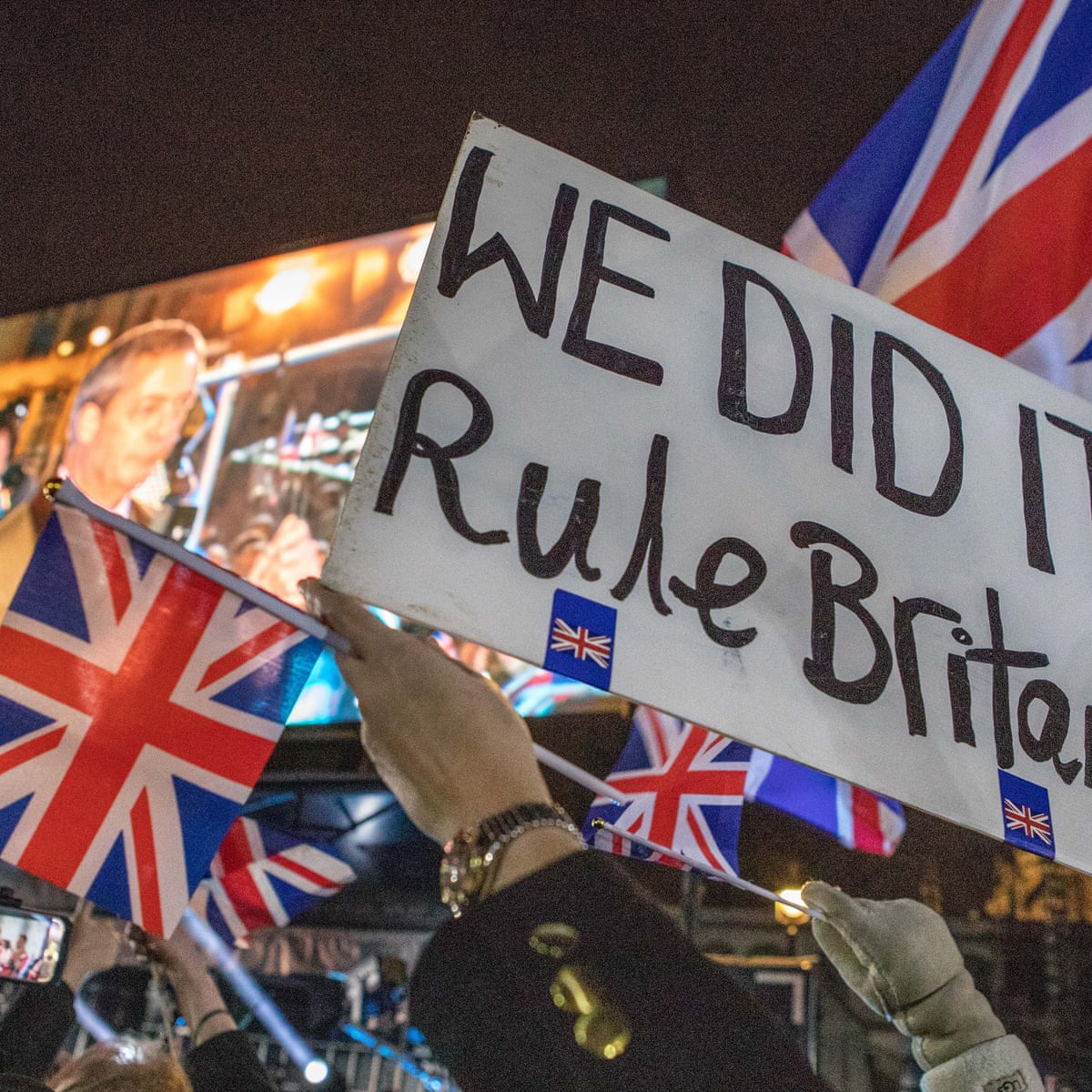



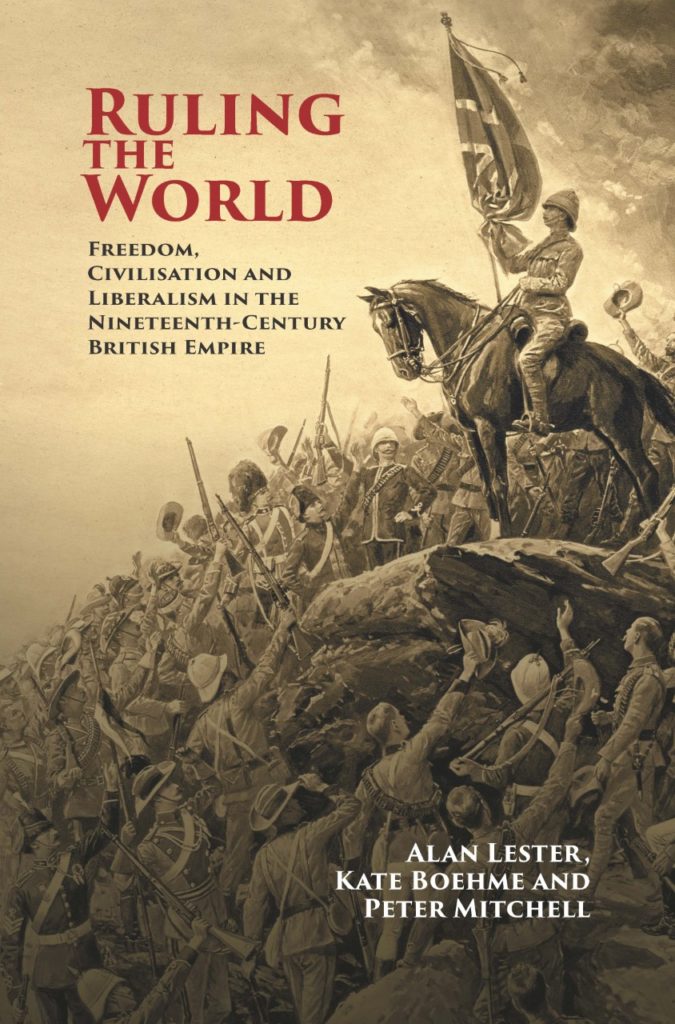




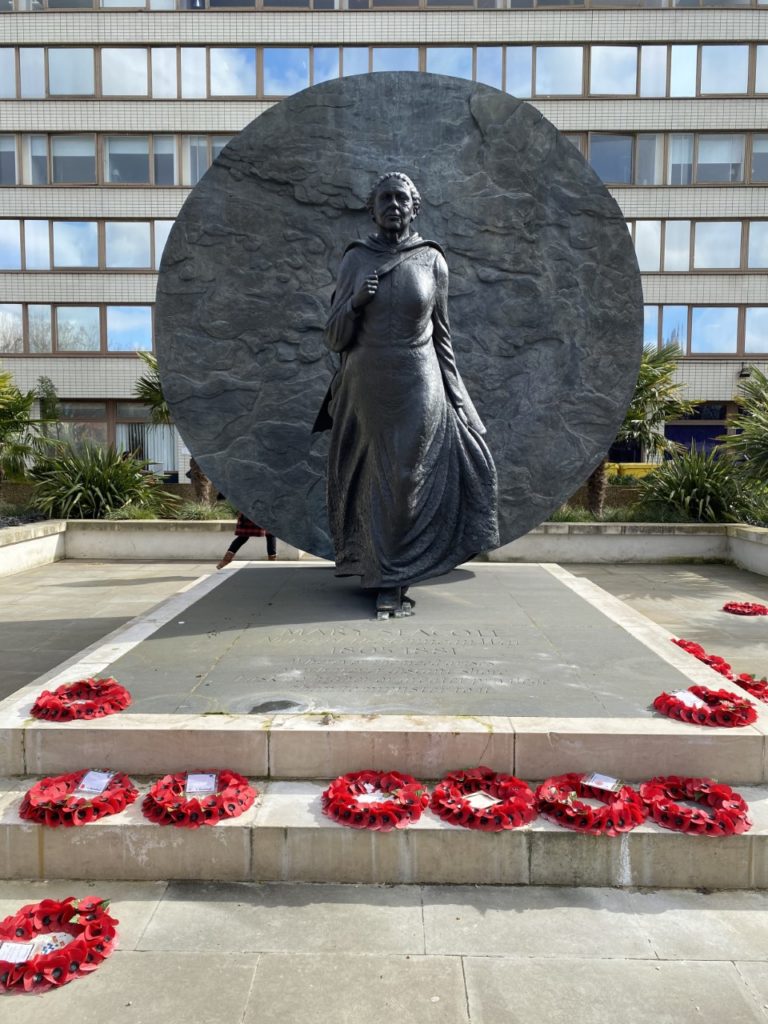


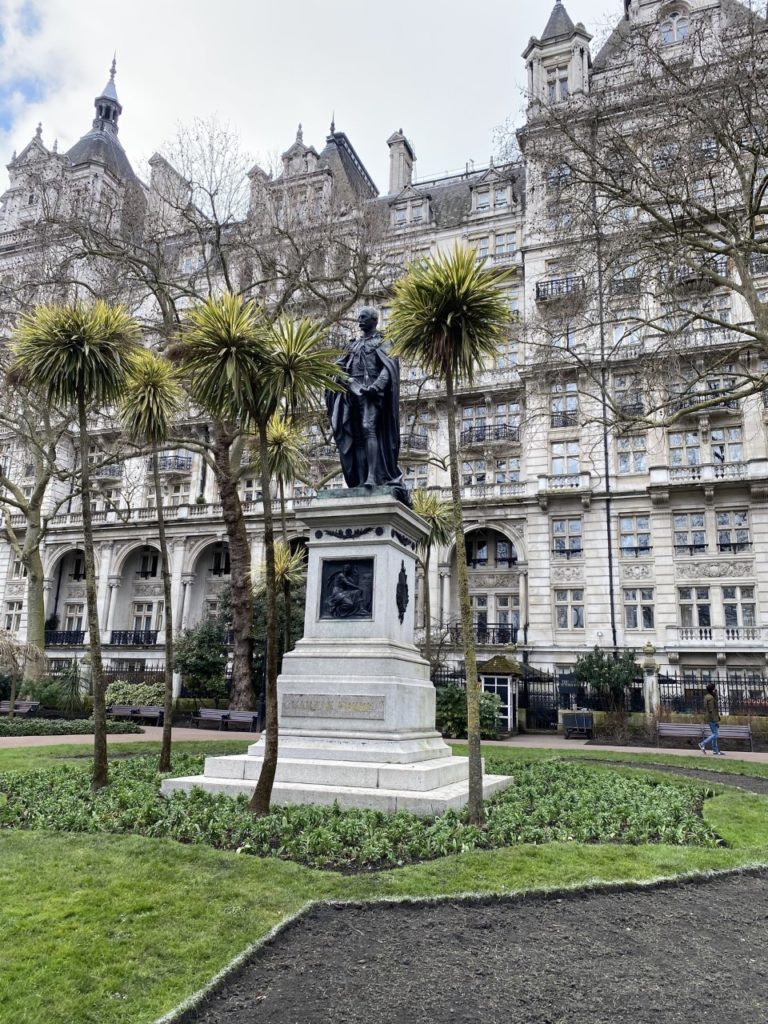
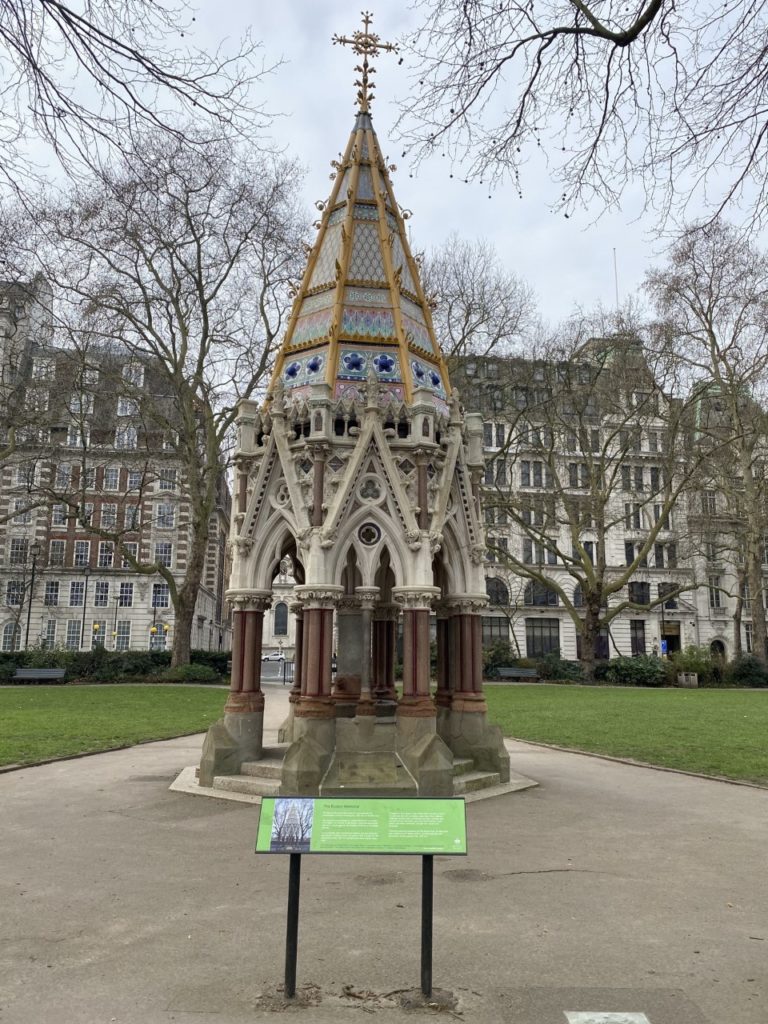


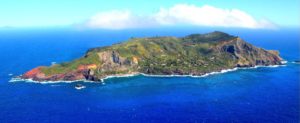
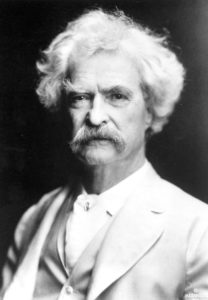


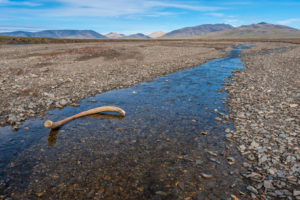

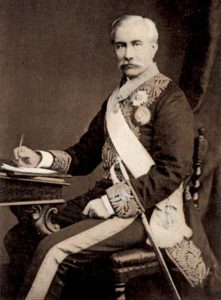
Recent Comments